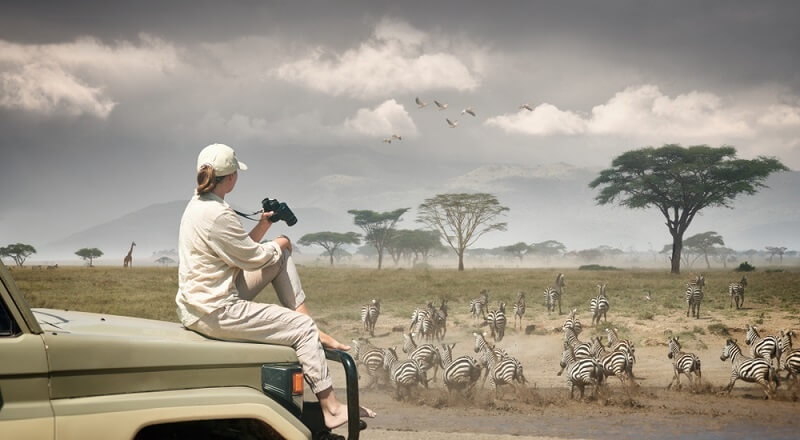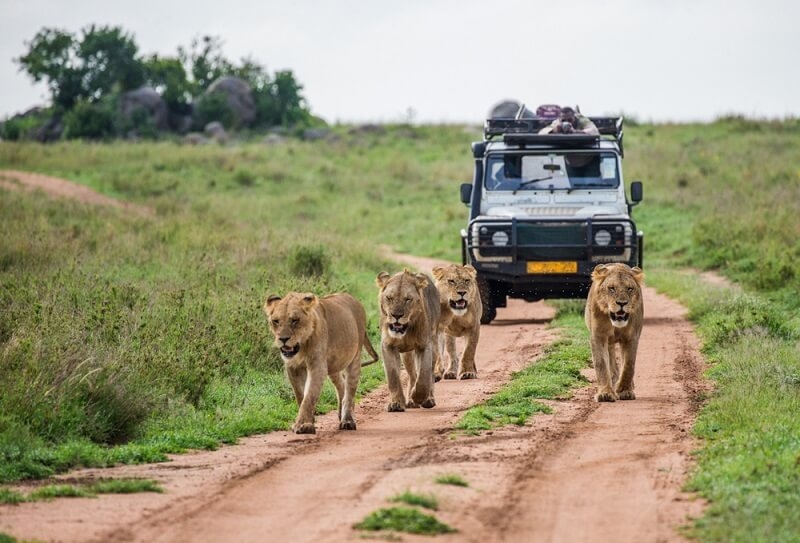
Have you ever pictured elephants walking across those golden savannahs? Seeing the Great Migration? Or a lion lounging in the shade of an acacia tree? If so, Kenya could be the safari destination for you. But dreaming is just part of the equation; dreaming is not enough to plan your safari trip. To fulfill your dream trip, you must understand how to prepare for a safari in Kenya and make it a once-in-a-lifetime experience.
This article covers everything from choosing the right parks and accommodation to understanding the seasons, costs, and general travel logistics. Whether considering a trip by yourself, as a couple, or as a family, read on and learn how to plan a safari in Kenya smartly!
Safari culture originated in Kenya. With astounding landscapes, wildlife roaming in vast reserves, and rich cultural resources, Kenya is the best place to experience an extraordinary safari.
Whether you’re looking for raw adventure or a five-star safari experience, African wildlife tours in Kenya can accommodate every type of traveler.
Finding your way through the high season in Kenya is essential information, as it will help you maximize wildlife experiences while minimizing the crowds or bad weather.
Tip: The best season to visit Kenya depends on your travel priorities—are you after wildlife density? On a budget? Or simply after a more relaxed pace?

Kenya offers numerous parks and reserves, each with its highlights. Here are the best parks in Kenya for different types of safari experiences:
Each park offers a different feel, so combine two or more to create a balanced itinerary.
One of the most important choices when planning a safari in Kenya is deciding between budget and luxury safari options. Your budget will significantly influence your experience, accommodations, and mode of transport.
Tip: Even a modest budget can deliver a fantastic experience if you choose the right time and tour operator.
A well-structured itinerary ensures you make the most of your safari without rushing or missing key experiences. Here’s a sample 7-day itinerary:
Relax and recover from your flight. Optional: short game drive at Nairobi National Park.
Multiple game drives, an optional hot air balloon ride, and a Maasai village visit.
Drive to Lake Nakuru; afternoon game drive focused on flamingos and rhinos.
Explore the park’s elephant herds and enjoy views of Mount Kilimanjaro.
Fly or drive back for departure.
This kind of loop gives you exposure to different environments and wildlife populations. You can adjust based on interests and time.
There are two main routes when planning a safari in Kenya: book everything independently or go with a tour operator.
If you're a first-timer, choosing a reputable African wildlife tour operator is recommended for convenience and peace of mind.
Nairobi is not just a stopover—it offers several wildlife-related attractions and cultural experiences. Here are some Nairobi safari tips for before or after your bush adventure:
Nairobi is relatively safe in tourist areas, but stay alert, especially at night. Use hotel shuttles or reliable taxis.
Knowing what to bring ensures your comfort, safety, and enjoyment during the trip.
For more packing strategies, check out guides focused on packing light for Africa.
Safaris aren’t just about wildlife, connecting with Kenya’s people, and respecting local traditions.
Traveling responsibly adds depth to your experience and supports conservation and community efforts.
Your safari preparation should include some vital health and safety precautions.
Plan your internal travel—whether flights or road transfers—based on the distances between parks, which can be vast.
When you learn how to plan a safari in Kenya, you unlock one of the world's incredible travel experiences. With careful planning, the right mentality, and attention to detail, you will see incredible wildlife, interact with colorful cultures, and develop memories that will last a lifetime!
Whether you're going to the migration in the Mara, elephants under Kilimanjaro in Amboseli, or flamingos on Lake Nakuru, you are experiencing the African safari experience in Kenya.
So, grab that safari hat, pack your binoculars, and start this adventure—your ultimate Kenyan safari awaits you!
This content was created by AI